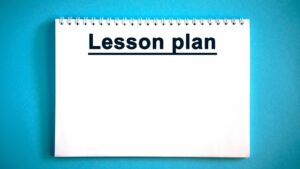by
MS ROGERIO QUIJANO SOTOMAYOR
BA SAMUEL IGNACIO BENITEZ OSUNA
Motivation plays an important role in the quality of our performance in every single activity we do throughout our daily routine. It should not be a surprise that learning a second language is not the exception of the rule; probably the most important factor that educators can target in order to improve learning is motivation (Olson, 1997).
However, for ELT teachers, the problem lies in the fact that students’ motivation depends on so many factors that are out of their control, which makes it challenging for them to find strategies that help to positively motivate students.
How can we define teaching practice?
There is no formal definition for teaching practice; however, in ELT literature, it is understood that teaching practice can be seen as all of the class actions, whether they are related or not to the topics seen during sessions, that are done by a teacher, such as: class activities, grading exams, the way the teacher communicates with students, games played in class, etc.
Why is it important to have motivated students?
It is commonly accepted that a motivated person performs any given activity better than an unmotivated person. Similarly, a motivated student pays more attention, begins working on tasks earlier, asks more questions and answers, and appears to be happier and more eager than an unmotivated student (Palmer, 2007). In other words, it is true to say that very little learning can occur if learners are not motivated.
Moreover, Dornyei (1998) agrees that motivation is a key to learning a second language, since it affects learners’ success. Hence, finding ways to motivate students, in order to have more opportunities to fulfill their teaching objectives, must be one of the most important priorities for teachers.
Do teachers really affect students’ motivation?
Various previous studies have found that the teaching practice is an important factor that improves students’ motivation (Niemiec & Ryan, 2009; Santisi, Magnano, Hichy, & Ramaci, 2014). In addition, although teaching is not a popularity contest, students display more motivational benefits from teachers they like over teachers they dislike (Montalvo, 1998).
Actually, the teachers’ role is so important that even the environments managed in the classroom can lead to a positively or a negatively stimulated class (Nguyen, 2008). As a consequence, as Senge et al (1994) suggests, teachers must become the producers for environments that will allow students to learn as much as possible.
How can teachers really motivate students through their teaching practice?
Motivating students should not be a difficult thing to do, teachers can simply begin by being able to reflect their dedication to the students (Walker, 2008), in addition, teachers can also :
- Use various and interesting activities. Language learning is a little different from other subjects, since besides having to work with four different skills (listening, speaking, writing and reading), students need to memorize vocabulary, sentences and grammar. Thus, it becomes necessary to apply various and interesting activities with moderate challenge to arouse curiosity in English learning. Some of these interesting activities can be: games, crosswords, word search, songs, etc (Kong, 2009).
- Have high expectations. Research demonstrates that teacher expectations influence student achievement (Kong, 2009).
- Create a relaxed and positive learning climate. The climate in a class is very important since it creates an environment that encourages both achievement and motivation (Richards, J. C., & Theodore, S. R., 1988).
- Provide opportunities for students to experience success. The more opportunities we can give our students to use English, the more they will experience success in English, producing as a result more motivated students (Kong, 2009).
- Come to class each day ready to teach. Since, it is easy to learn in classes when there is something to do the entire class period (Walker, 1998).
- Be positive. Remember that a positive teacher looks more available and accessible to students, which promotes a healthy communication environment between students and the teacher with regards to their progress (Walker, 1998).
- Be respectful. As teachers who give the highest respect, get the highest respect (Walker 199).
As mentioned before, teaching practice is related to everything a teacher does inside the classroom, therefore adding these actions to our daily class routine, even if some of them seem simple, should allow a class to develop a positive teacher-student relationship which will promote interest from students and will enhance students’ results.
Conclusion
Students’ motivation is a critical part of success in education, and it is undeniable that teachers play a great part in improving motivation.
Finding ways to motivate students can be challenging but by making simple changes and putting ideas into practice, not only will students’ motivation will be enhanced, but other aspects of students’ performance will also be affected as a consequence, for example (Walker, 1998):
- Students will learn more of the class contents.
- Students will be more engaged in learning.
- Students’ confidence towards the language will improve.
- Students’ academic self-concept will increase.
- Students’ interest in the subject and the desire to learn more will improve.
References:
- Dornyei, Z. (1998, March). What is motivation? Paper presented at the AAAL 1998 Conference, Seattle,WA.
- Kohn, A. (1996). Beyond discipline: From compliance to community. Alexandria, VA: Association for Supervision and Curriculum Development.
- Kong, Yuan (2009). A Brief Discussion on Motivation and Ways to Motivate Students in English Language Learning. International Educational Studies. Vol 2. Num. 2. May 2009.
- Montalvo, G. P. (1998). Pleasing the Teacher. Dissertation Abstracts International Section A: Humanities & Social Sciences, 58(8-A), February, 3002.
- Nguyen, Chi (2008). Students Motivation and Learning. Center for Teaching Excellence, United States Military Academy, West Point, NY, 2008.
- Niemiec, C. P., & Ryan, R. M. (2009). Autonomy, Competence, and Relatedness in the Classroom Applying Self-Determination Theory to Educational Practice. Theory and Research in Education, 7, 133-144.
- Olson, G. (1997). Motivation, Motivation, Motivation – Secondary School Educators. Retrieved from: sysiwyg: //934/http://7-12educators.about…-12educators/library/weekly/aa071897.htm.
- Palmer, D. (2007). What Is the Best Way to Motivate Students in Science? Teaching Science-The Journal of the Australian Science Teachers Association, 53(1), 38-42.
- Richards, J. C. & Theodore, S. R. (1988). Approaches and Methods in Language Teaching. New York: Cambridge University Press.
- Santisi, G., Magnano, P., Hichy, Z., & Ramaci, T. (2014). Metacognitive strategies and work motivation in teachers: An empirical study. Procedia – Social and Behavioral Scienc- es, 116, 1227-1231. doi: 10.1016/j.sbspro.2014.01.373
- Senge, P., Kleiner, A., Roberts, C., Ross, R., and Smith, B. (1994). The Fifth Discipline Fieldbook: Strategies and Tools for Building a Learning Organization, NY: Doubleday Currency.
- Walker, Robert J. (2008). Twelve Characteristics of an Effective Teacher: A Longitudinal, Qualitative, Quasi-Research Study of In-Service and Pre-Service Teachers’ Opinions. Educational Horizons, v87 n1 p61-68 Fall 2008.
Rogerio Quijano [email protected]
Rogerio Quijano is an EFL teacher at Escuela Normal de Sinaloa, with more than 10 years of experience in the world of ELT. He is Interested in research related in the relationship of motivation and language acquisition in Mexican students




